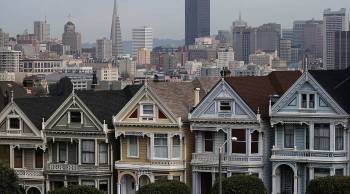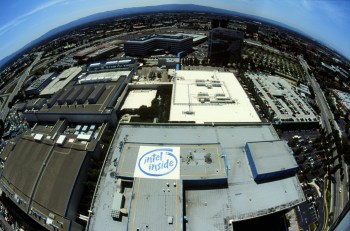Bridging a perception gap in, and about, Silicon Valley
In California, there’s an argument about whether the hub innovation known as Silicon Valley would be a richer or poorer place if left more to its own devices. This week, we’ve heard about the case for moving innovation out to sea, outside the limits of regulation. There’s also a bid to take Silicon Valley and make it its own state. Today, another sense of the word “island,” the criticism that Northern California’s tech community is sometimes insular.
Waiting for the bus is a great leveler, you might be wearing a blue suit, you might be wearing blue coveralls, but if you’re waiting for a bus, you are in this together. At the 24th street and Valencia bus stop in San Francisco’s Mission district, it’s different. Some people wait for the regular city bus. Others wait with their messenger bags and earbuds for buses that are more imposing. Double decker, tinted windows, even the tires shine with Armor All. The generic term is “Google Buses,” but there is also Yahoo, Cisco, Electronic Arts.
“There’s not a lot of interaction… that’s increased the tensions,” says Sara Shortt, executive director of the Housing Rights Committee of San Francisco.
Tensions, no kidding. Protesters have blocked some of the tech buses and somebody slashed tires. The immediate issue that private buses cause congestion and delays for city bus riders at the public stops. But what’s also going on here is a clash of cultures and pay scales with tech workers moving into what had been working class neighborhoods. Rents are up and tech workers get blamed.
“That’s a really different thing then just sort of, envy. That’s real meaningful frustration and anger, ” Shortt says. “Will we be next? Will we be the next one to get an eviction notice. Will be priced out? So it’s really different from they’re making more money than me and that makes me mad.”
None of the people waiting for the private rides would comment, some indicated their companies told them to stay mum. Tech companies argue the buses keep commuter cars off the road, which helps with traffic and pollution. But there’s something larger going on here. It’s about a perceived lack of involvement.
“There’s a whole range of things that tech could be doing better to show us that they care about our city,” Shortt says. “To show us that this is more than just a crash pad for their employees.”
Clearly some people at the top of tech companies are engaged. Facebook’s Mark Zuckerberg just gave the Silicon Valley Community Foundation nearly a billion dollars. Marc Benioff of Salesforce.com and his foundation gave $30 million to non-profits, including $2.7 million to San Francisco Middle Schools.
“I think they live in these negibhorghod bcause they value diversity, the value rich culture,” says City Supervisor David Campos, who represents both the long-time residents and the tech workers who’ve moved in his districts.
Campos organized a public meeting in late January where people came to complain about or to support the role of tech their neighbhorhoods, where Crystal Schultz described herself as a program manager and engineer at Google.
“Not everyone at Google is a billionaire. Like many people, 10 years after the fact, I’m still paying off my student loans. I moved to the Mission because I am a pedestrian,” Shultz says. “I don’t own a car. I moved to the mission because there are two Bart stations. I walk everywhere on the weekend, and I’ve relied on the shuttle since I’ve moved to San Francisco.”
Supervisor Campos says interactions like this are all too rare. Newcomers, he says, have a responsibity to make their impact positive, “and that they work with people who have been there long term to make sure those individuals are not pushed out.”
“It can be easy for people in San Francisco to have this very warped sense of what the world outside of technology community is,” says Catherine Bracy, director of Community Organizing at San Francisco-based Code For America.
“When you don’t have that interaction with real people. In the sense of like, I’m struggling, I don’t have access to the latest technology all the time. My problems aren’t about how to get takeout delivered to my house or how to launch my app in a faster way. That’s where the disconnect kind of starts coming in.”
Code For America gives tech workers a way to use their skills to engage community projects. Like a text messaging system to warn families there’s a problem with their food stamps before they find themselves cut off from benefits while waiting in the grocery line.
“That was a huge win,” she says. “We’re building a bridge between tech and entrenched public problems and figuring out solutions.”
The needs are there. So is demand by tech folks to help. Bracy’s organization gets 700 applications a year for fellowships to build these bridges where there may be islands.
*CORRECTION: A previous version of this article mispelled Sara Shortt’s last name. The text has been corrected.
There’s a lot happening in the world. Through it all, Marketplace is here for you.
You rely on Marketplace to break down the world’s events and tell you how it affects you in a fact-based, approachable way. We rely on your financial support to keep making that possible.
Your donation today powers the independent journalism that you rely on. For just $5/month, you can help sustain Marketplace so we can keep reporting on the things that matter to you.




















